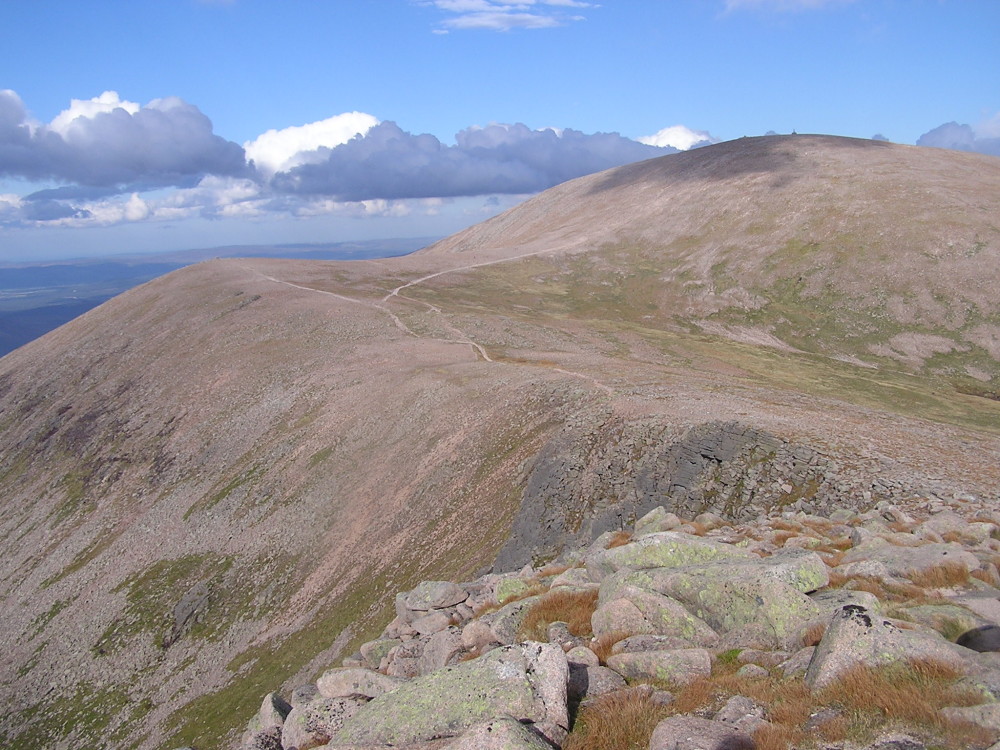
Cairngorm is a beautiful mountain. It retains that beauty despite Highlands and Islands Enterprise’s record as custodians of the Cairngorm Estate during which landscape and wildlife, and all the people to whom these are important, have been shown scant respect. Despite the unnecessary clutter, rubbish and vehicle tracks the ski areas too retain their beauty – indeed that is why many skiers care about it passionately. It should provide a fantastic place for downhill skiing and it still does for ski tourers.
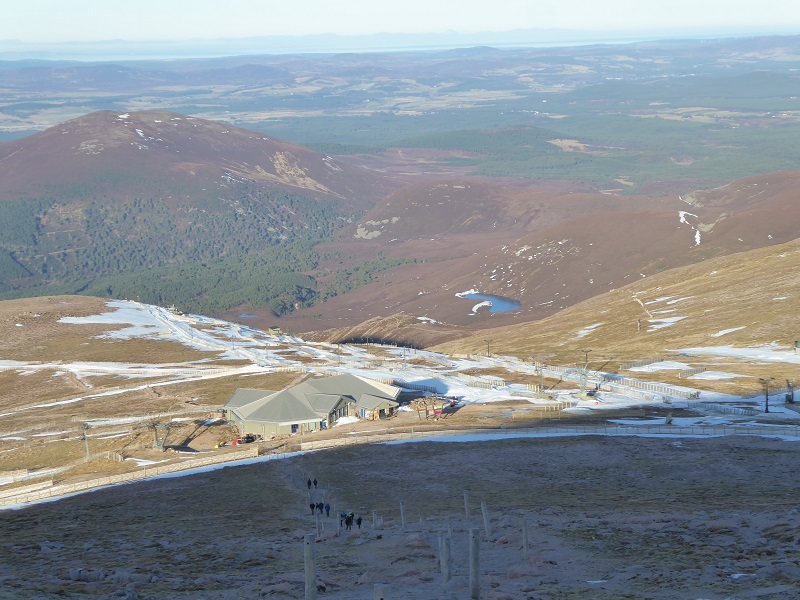
Part of the beauty of Cairngorm comes from the form of the mountain as a whole, the way that viewed from Glenmore its rounded curves of ridge and corrie build to the summit dome. Part also though comes from the finer grain of the landscape, the mix of boulder fields, bog and burn, headwalls and heather, the legacy of the last ice age and the climate since. This beauty matters to people, whether devotees of Cairngorm or the tourist drawn to the Highlands by the marketing of our landscapes. It should be central to what the Cairngorms National Park does.
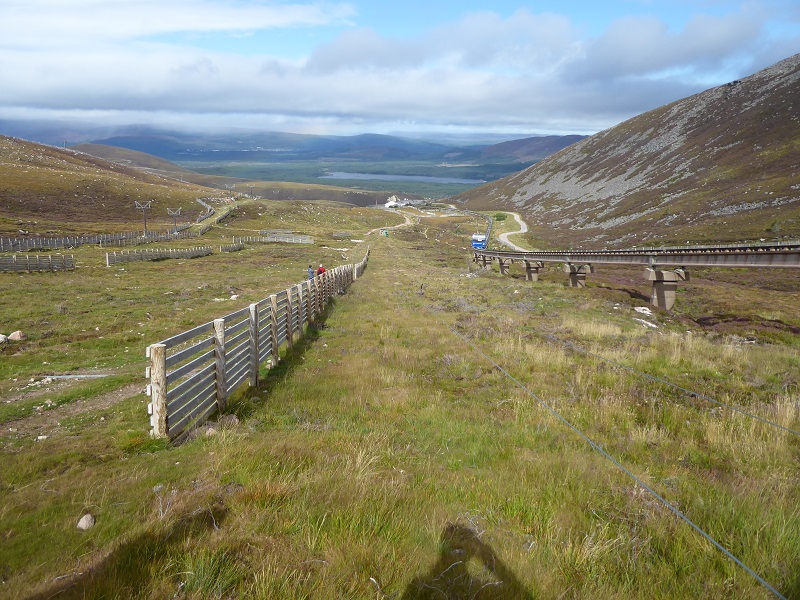
This context, that Cairngorm is a beautiful hill, is officially recognised by the inclusion of the Cairngorm ski area within the Cairngorm Mountains National Scenic Area, which extends down to Glen Feshie and across to Ben Avon. Rather than being excluded from the NSA, like many ski areas in Europe which are excluded from National Parks, Cairngorm was seen as integral to it, despite all the poorly designed and managed development. The reason, I believe, is connected to Glenmore and Cairngorm providing the main visitor access point to the main massif of the Cairngorms. The implications are that any future development at Cairngorm should be in accordance with or preferably enhance the special qualities of the area. The proposal to install a dry ski slope by the car park at Cairngorm (see here for Committee Report) needs to be considered within this context.
Current approaches to assessing impact of developments on landscape
Planning Authorities have been under pressure to come up with an objective method of evaluating impacts of developments on the landscape and this has resulted in the development of a standard methodology, referred to as Landscape Visual Impact Assessment, which considers the impacts of developments from certain viewpoints (see here). In Scotland, the development of these methodologies has been driven by public concern about the visual impact of windfarms and the guidance developed by SNH on this (see here) very much focuses on the impact these developments have on the landscape as a whole. The emphasis is about working out from where wind turbine might be visible or “Zones of Theoretical Visibility”. While this makes perfect sense for structures that can now be over 200 high, it only addresses part of the issue, even for wind turbines:
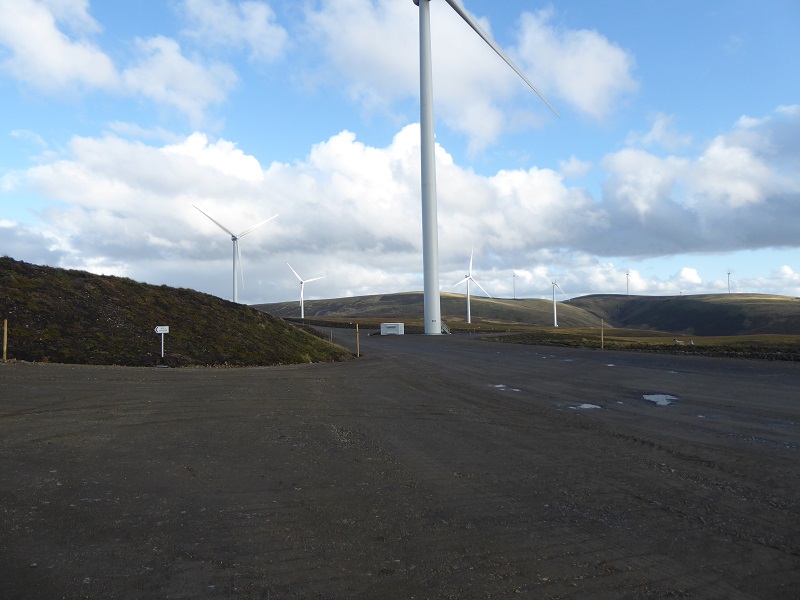
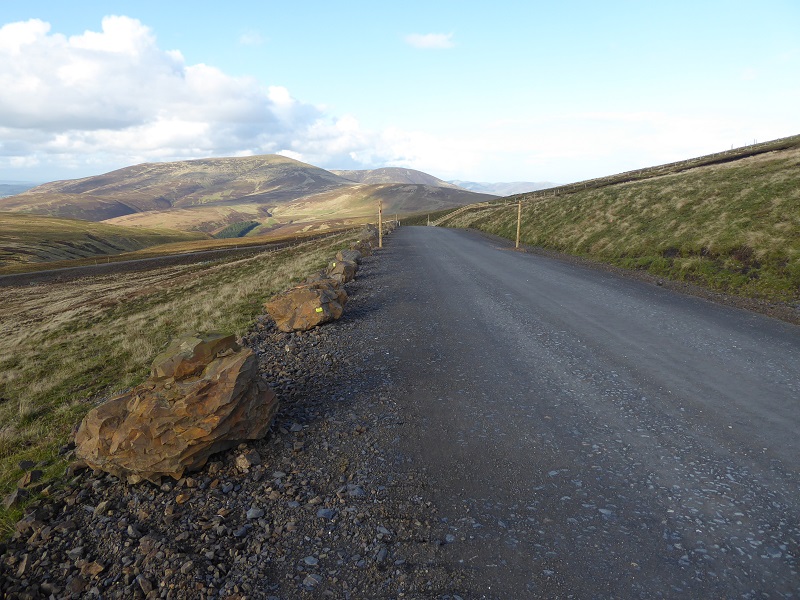
The other side of landscape protection is what people see from close up. Enjoyment of beautiful landscapes is not just about experiencing undeveloped skylines, its about what you see immediately around you. This is why Parkswatch is so concerned about the standard of construction of the many tracks that scar our National Parks: its not just that you can sometimes see them from considerable distances, its about they affect people’s enjoyment of the landscape close up.
The CNPA’s assessment of the landscape impact of the proposed dry ski slope
The context outlined above is pertinent to the assessment of the landscape impacts of the proposed dry ski slope at Cairngorm. Much attention in the planning documents has been given to the impact an artificially coloured dry ski slope will have from a distance (7 out of the ten viewpoints in the planning application were from a distance (see here – viewpoints document was lodged at the start of the process)). The CNPA’s Landscape Adviser has gone through the assessment Natural Retreats commissioned on this with a fine toothcomb pointing out for example that it failed to say that the slope might be seen from parts of Meall a Buachaille. Considerable attention has also been given to how a dry ski slope might affect people’s experience of the Cairngorms Wild Land Area, the boundary of which more or less follows the skyline around the ski area. While much of this is necessary, it misses the main point.
The proposed dry ski slope will be serviced by carpet lifts and so has no lift infrastructure. Even though the matting will be bright green, from a kilometre away its pretty obvious it is unlikely to have any significant visual impact, and even if there had been lift towers, their impact would not have been that significant from that distance. Its the impact from close up that matters in this case.
Which brings us back to the fact that the Cairngorms ski road is the main access point to the Cairngorms for visitors and what they see and experience here is extremely important. Despite all the clutter and neglect – the lack of landscaping and maintenance of the carpark is a disgrace – entering the car park you do get a sense that you are arriving somewhere special and when the wind is blowing, as it often is, it feels wild:
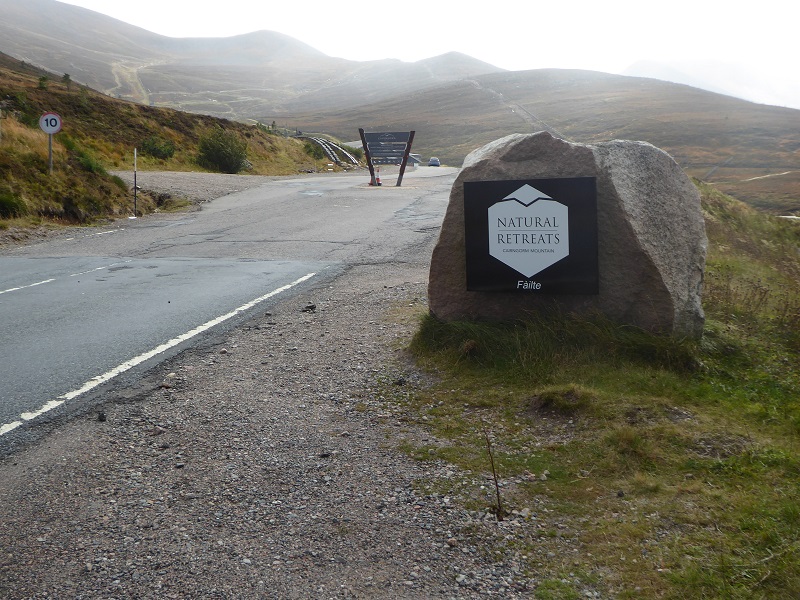
 Instead of trying to improve this experience and enhance the wild and natural aspects of the ski area, HIE and Natural Retreats are proposing to turn a chunk of the moorland above the carpark into an artificial area covered by green matting. Consider how matting, which only comes in two colours, white or the green on the left, will affect the experience from the car park.
Instead of trying to improve this experience and enhance the wild and natural aspects of the ski area, HIE and Natural Retreats are proposing to turn a chunk of the moorland above the carpark into an artificial area covered by green matting. Consider how matting, which only comes in two colours, white or the green on the left, will affect the experience from the car park.
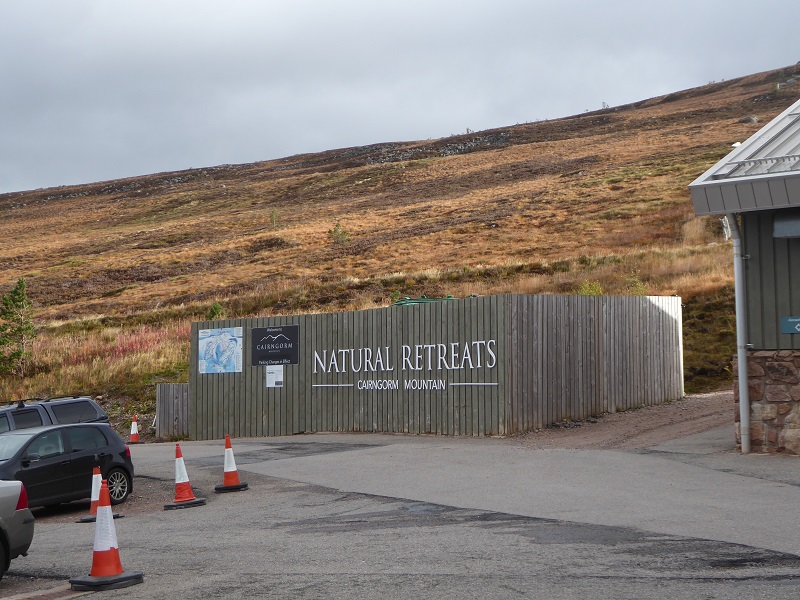
The planning assessment dismisses this as a local impact which can be mitigated:
Supporting landscape material has demonstrated how the new facility will sit in this landscape. Whilst it will inevitably be visible from the immediate surrounding area and further afield these impacts will be largely localised and will, as noted above, be viewed within the context of an operational ski centre. Although there will be a variation in seasonal landscape impacts (e.g. the matting of the slope will be more prominent in winter when the snow cover is light whereby the green colour will be more pronounced and visible) overall it is considered that these impacts can be satisfactorily mitigated over time by the proposed extensive montane planting in and around the site which will help to conserve and enhance the landscape.
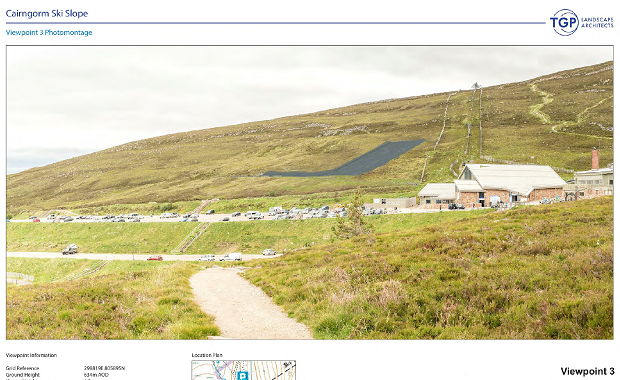
This assessment is wrong for a number of reasons (as is illustrated by the photomontage above):
- the development sits outwith the actual operational ski area on ground where native woodland is currently regenerating naturally, if slowly (no doubt in part because its such an exposed slope);
- it implies that because there is an operational ski development, further development is acceptable, whatever the standard;
- it implies that because the impact is localised it does not matter so much;
- it suggests the visual impact can be mitigated.
The first report on the planning application from the CNPA’s Landscape adviser 2018_0112_(see here) explains the impact on the local landscape well:
“Some parts of the hill are without any infrastructure and form the outer extent of the ski centre and the limit of its physical influence on the surrounding landscape [this slope, my point 1]. They all contribute to the character for the ski centre. The hillsides and ridges have a strong texture which is complex and relatively small grained. This is derived from the natural vegetation and the matrix of upland heath, wet flushes, some grassy area and a few small trees together with natural rock exposures, some solid and some is glacial deposit or scree. It emphases the natural setting of the ski centre and of course the harsh nature of the climate at such altitudes. The dominant colours of the landscape are browns and warm greys. Green is a feature that is only prominent during the summer months though it persists in small patches in the wet flushes throughout the year.”
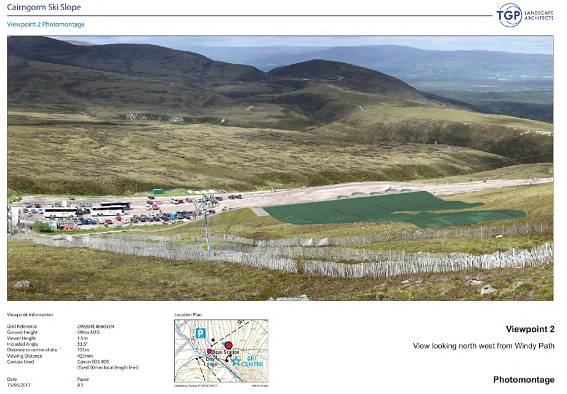 Unfortunately, the 3 Viewpoints which illustrate the local impact have NOT been included in the papers for the Planning Committee. They show enough to question the conclusion of the report even though I believe they were carefully selected to minimise the local impact of the development:
Unfortunately, the 3 Viewpoints which illustrate the local impact have NOT been included in the papers for the Planning Committee. They show enough to question the conclusion of the report even though I believe they were carefully selected to minimise the local impact of the development:
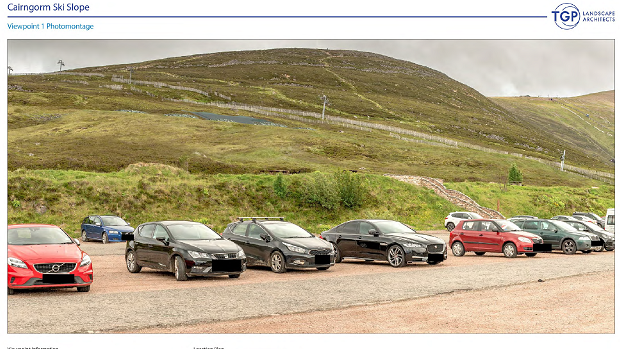
None of the photomontages show any access track – people going for ski lessons will need to get there – or any related infrastructure such as crash barriers, fencing or above ground utilities. I can understand why CNPA officers did not request this because the current approach to landscape assessment generally neglects the importance of local effects in the natural environment (planners, including those at the CNPA, generally take far more account of details when it comes to buildings). That needs to change not just at Cairngorm but throughout our National Parks.
The creation of a dry ski slope would, as the photos show, clearly change the character of the ski centre, creating a large artificial area outwith the current boundary and at the same time impacting on the experience of visitors when they arrive. Whatever the merits of a dry ski slope at Cairngorm, its hard to think of a worse location in terms of impact on the Visitor Experience.
Having tried to minimise the likely landscape impact the dry ski slope on visitor’s experience of the National Scenic Area, the planning appraisal goes on to claim that, while there are clearly adverse impacts, these can be mitigated.
The first proposal for how this can be done invites ridicule:
“the colour of matting has been clarified as a mid-toned bright green colour with its impact in the landscape acknowledged and information provided on how this may change over time and proposals set out for the use of organic shaped patches to replace worn areas of matting which would then create a mottled effect helping to reduce the flat colour of the proposals”
Leave aside how long the mottling process might take, the carpet will still stick out like a sore thumb. There’s no need to take my word for it, here is what the CNPA’s planning adviser said in their initial report:
The proposed carpet area is contrary to the existing landscape character in almost all respects. It is a regular shape and flat colour. The application only states dark green, though the visualisations show a mid-green. The precise shade is not indicated. The colour green is not well suited to match existing shades of the natural landscape. The flat even texture will hold snow in different ways to the surrounding area. The location of the ski slope moves the infrastructure into the natural zone of the hillsides. The topography will be broadly similar to existing however the bottom of the slope will be built up.
A number of mitigation measures are proposed. However they are unlikely to be effective because –
o A large regular shape will still remain in single block of colour; the planting around the edge will have limited effect in softening the lines. The colour green is not appropriate to this landscape.
All of this has been discounted in the Planning report and instead great emphasis given to a second mitigation proposal, montane tree planting:
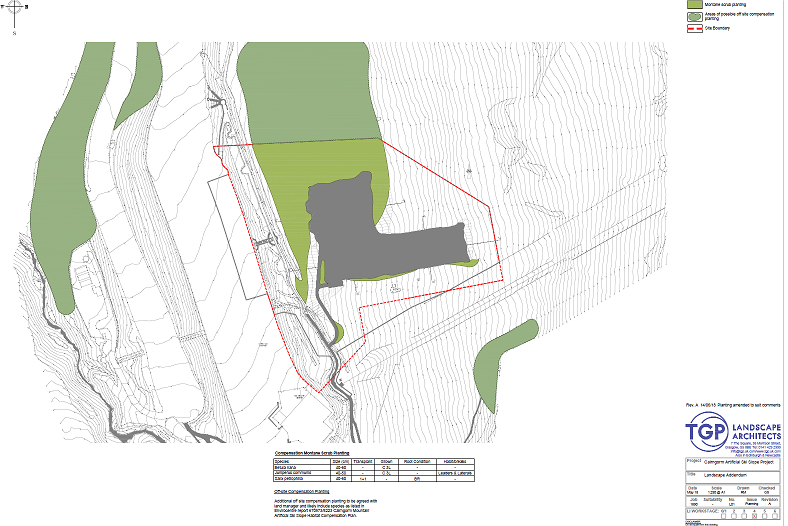
Now, I am not against planting at Cairngorm – indeed of all the land on the north west side of the Cairngorms, the ski area is where I believer planting of montane scrub is most appropriate – but to claim planting here would mitigate the proposal is again wrong:
- First, montane scrub will not screen the vast majority of the green carpet area, its too big for that, though it could screen a new path and viewing area (hardly the issues at stake)
- Second, the areas where planting is proposed is already regenerating perfectly well naturally
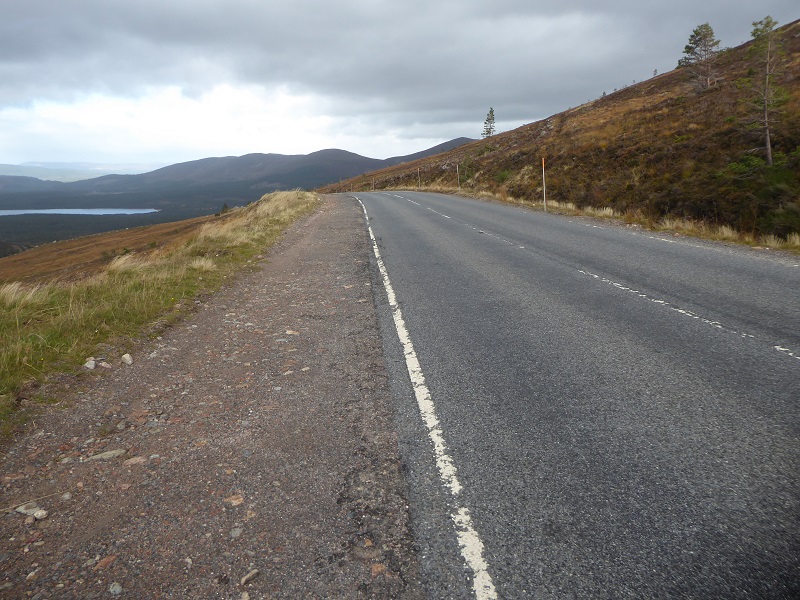
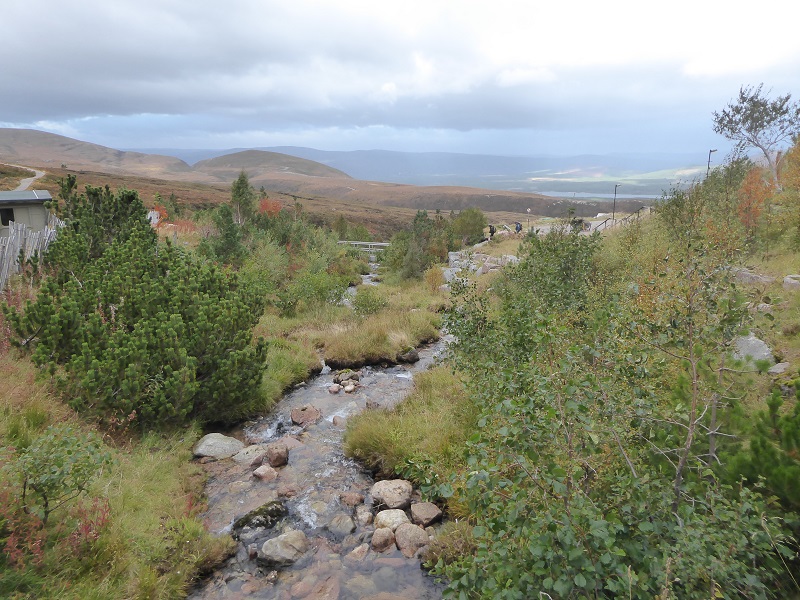
Unfortunately, instead of focussing on the landscape impact of the development, right from the beginning of the report the impression is given that the CNPA will accept any development as long as there is mitigation:
“However it may be worth noting that, as will be outlined later in this report, the proposed development has the potential to deliver on some of the management principles of the Cairngorm and Glenmore Strategy in terms of expanding native woodland planting,………”
In fact in landscape terms and in terms of the Cairngorm and Glenmore Strategy, the planting proposals are in the wrong place. What is needed is consideration of how to improve the experience of people arriving at the car park or as the Strategy puts it “enhancement of visitor infrastructure and facilities to ensure high quality, low impact development”. Within that context and the context of the natural regeneration taking place round about, planting of trees on the steep bank between the two car parks would have a much more positive landscape effect, as would planting trees across the car park, dividing it into much smaller areas. However, including in the proposals any suggestion that the car park area could be improved would bring into sharp relief the negative impact that building a dry ski slope above it would have.
I suspect CNPA officers know this:
The proposed mitigation (in total including both areas) would have a sufficient effect to mitigate the adverse landscape impacts identified. However these will take some time to be fully effective. This is
because the mitigation relies upon the weathering of the matting and more importantly the growth of planted areas in a very exposed area.
Hardly convincing is it?
What needs to happen
The fundamental problem at Cairngorm remains HIE’s ownership and Natural Retreats management of the land and infrastructure there. What is needed, and what was agreed as part of the Cairngorm and Glenmore Strategy, is a proper strategy and plan for the area which is then enforced. The current problems with the funicular (see here) make this even more pressing. After four years of their lease and several requests from the CNPA, Natural Retreats submitted a document entitled “Long terms Strategy” along with the other planning documents (see here) which has been circulated to Committee Members Its not a strategy at all – it takes a minute to read – but rather an outline of work areas over the length of the lease between HIE and Natural Retreats. This total disrespect for the public and the National Park is unlikely to change, I believe, until one or both organisations are forced out of Cairngorm.
The Cairngorms National Park Authority has a clear choice at Cairngorm. It can either continue to bow to political pressure and HIE, ignore the wider issues of how the mountain is managed and continue to consider planning proposals incrementally and in each case minimise the impact of proposals, however stupid, as in the case of the dry ski slope, or it can take a stand. The Dry Ski Slope provides them the perfect opportunity to do so. There is every reason to object to the dry ski slope on landscape grounds, as it will clearly have an adverse affect on the landscape at the main entry point to the Cairngorms massif and, as my last post showed, there are no overriding reasons of national importance which could lead them to disregard the landscape impact and seek mitigation instead.
It will be interesting to see what they decide on Friday.
Excellent blog post.
At a very basic level Coire Cas is the wrong place for a dry slope.
The practical, economic and environmental arguments don’t stack up.
Please keep articulating the case.
Surely glenmore hayfield would be a much more suitable location ?
Doug.
Yes, if there was proven demand on top of that provided by the existing dry ski slopes in strath, the Hayfield would be a far better location. The trouble is though is that since the top part of the Cairngorm estate was taken away from Forestry Commission and handed to HIE, its different landowners and there is no incentive to co-operate and think of the wider whole. I think the first step to sorting the chair lift area is for the Scottish Government to transfer ownership of the land from HIE to Forestry Commission Scotland while HIE retains ALL financial liability for the funicular. FCS is far more open to community assets transfers than HIE so this would not preclude the land going at a later stage to the Aviemore and Glenmore Community Trust. A land transfer/single land ownership would allow proper consideration of options like relocating certain infrastructure downhill.
Friday morning planning meeting: the CNPA board has just decided to REFUSE planning permission for the Cairn Gorm dry ski slope.
Well done Parkswatch and the many other objectors.
The Aviemore Business Association was pleased to have the opportunity to speak at the planning committee meeting and put forward objections from the local business community. We’re delighted by the decision to refuse consent and we commend the planning committee for their common sense approach and going against the recommendation to approve the application made by planning officials. We were appalled by the fact that HIE allowed their tenant to bring forward this absurd proposal and by the fact that HIE’s Board inexplicable supported it by agreeing to lend their tenant the money required to build it , had it passed successfully through the planning process. The local Community is now looking to the Scottish Government to intervene and bring HIE’s involvement in the CairnGorm Estate to an end before their failed strategies can inflict further damage on the local economy.y